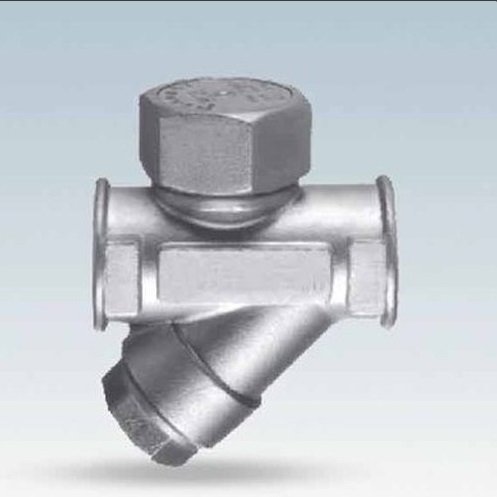Steam traps. Just saying the words might conjure images of mysterious contraptions lurking within the depths of industrial machinery. But fear not, for these seemingly enigmatic devices hold the key to unlocking efficiency and savings in your steam system. In this guide, we embark on a journey to demystify steam traps, unraveling their intricacies, and empowering you to wield them with confidence. So, grab your toolkit and let’s dive into the world of steam traps!
What Are Steam Traps, Anyway?
At their core, steam traps are the unsung heroes of steam systems. They’re like the gatekeepers of steam, allowing it to flow freely while ensuring that no unwanted guests—such as condensate or air—tag along for the ride. But how exactly do they accomplish this feat? Let’s break it down:
- Condensate Management: Steam traps excel at separating condensate—the liquid formed when steam loses its heat energy—from the steam itself. This is crucial because condensate can wreak havoc if left unchecked, causing equipment damage, decreased efficiency, and even safety hazards.
- Air Venting: In addition to handling condensate, steam traps also help vent out air from the system. You see, air and steam don’t play well together. Air pockets can impede the flow of steam, leading to uneven heating and reduced performance. By expelling air, steam traps ensure smooth sailing for steam throughout the system.
Now that we’ve laid the groundwork, let’s delve deeper into the fascinating world of steam traps!
Types of Steam Traps
When it comes to steam traps, variety is the spice of life. There are several types to choose from, each with its own unique characteristics and applications. Here are some of the most common ones:
1. Mechanical Steam Traps
Mechanical steam traps operate based on simple mechanical principles, such as buoyancy or differential pressure. They’re reliable, cost-effective, and suitable for a wide range of applications. Examples include:
- Float and thermostatic (FT) traps
- Inverted bucket traps
- Thermodynamic traps
2. Thermostatic Steam Traps
Thermostatic steam traps rely on temperature-sensitive elements to modulate the flow of steam and condensate. They’re highly responsive and ideal for applications with varying loads or operating conditions. Popular varieties include:
- Bi-metallic traps
- Balanced pressure traps
- Wax capsule traps
3. Thermodynamic Steam Traps
Thermodynamic steam traps utilize the dynamic relationship between velocity and pressure to discharge condensate. They’re compact, robust, and well-suited for high-pressure applications. Common types include:
- Disc traps
- Impulse traps
- Labyrinth traps
With such a diverse array of steam traps at your disposal, you’re sure to find the perfect match for your steam system’s needs!
Maximizing Efficiency and Savings
Now that you’re familiar with the different types of steam traps, it’s time to explore strategies for maximizing their efficiency and saving costs. After all, what good is a steam trap if it’s not performing at its best? Here are some tips to help you get the most out of your steam traps:
- Regular Maintenance: Just like any other mechanical device, steam traps require regular maintenance to ensure optimal performance. Schedule periodic inspections, cleanings, and repairs to keep your steam traps in top-notch condition.
- Proper Sizing: Make sure your steam traps are properly sized for the specific conditions of your steam system. Oversized traps can lead to energy waste, while undersized traps may struggle to handle the condensate load.
- Monitoring and Analytics: Take advantage of modern technologies, such as steam trap monitoring systems and predictive analytics, to keep a close eye on your steam traps’ performance. Early detection of issues can prevent costly downtime and repairs down the line.
- Training and Education: Invest in training programs and educational resources to empower your maintenance personnel with the knowledge and skills needed to effectively manage steam traps. A well-trained team is the key to long-term success.
By implementing these strategies, you can ensure that your steam traps operate at peak efficiency, leading to significant energy savings and improved system reliability.
FAQs (Frequently Asked Questions)
Q: How do I know if my steam trap is malfunctioning?
A: Signs of a malfunctioning steam trap include excessive steam leakage, inconsistent heating, water hammer noises, and increased energy consumption. Regular inspections and monitoring can help identify issues early on.
Q: Can I repair a faulty steam trap, or is replacement necessary?
A: In many cases, steam traps can be repaired rather than replaced. However, the decision depends on the extent of the damage and the cost-effectiveness of repair versus replacement. Consulting with a qualified technician is recommended.
Q: Are steam traps only used in industrial settings?
A: While steam traps are commonly found in industrial facilities, they can also be used in commercial buildings, hospitals, universities, and other settings where steam is used for heating or process applications.
And there you have it—your comprehensive guide to steam traps! From understanding their function and different types to maximizing efficiency and savings, you’re now equipped with the knowledge to tackle any steam trap-related challenge that comes your way. So go forth, my fellow steam enthusiasts, and unleash the full potential of your steam system with confidence and gusto!





Comments